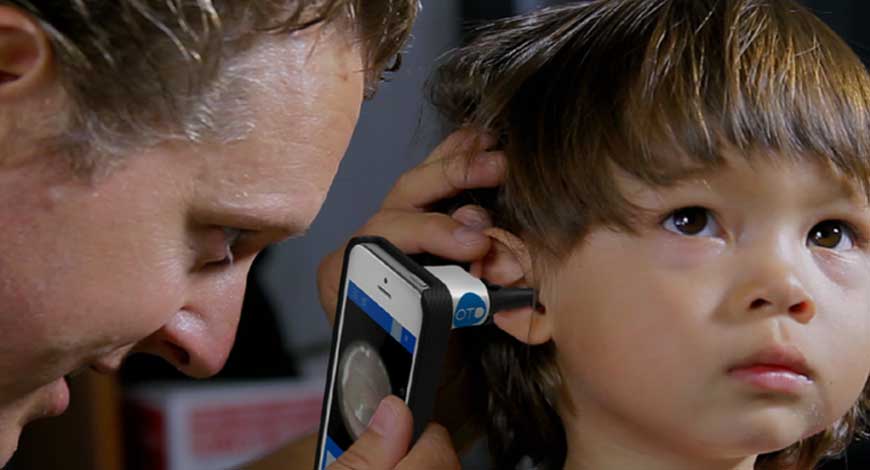Trends
Now, AI-powered smartphone app to diagnose ear infections

Physician-scientists at UPMC and the University of Pittsburgh found a way to use AI to accurately diagnose ear infections.
The AI-powered smartphone app that diagnoses acute otitis media (AOM) could help decrease unnecessary antibiotic use in young children. Researchers published their outcomes in JAMA Pediatrics.
AOM commonly has antibiotics prescribed to treat it, but can prove difficult to discern from other ear conditions without intensive training. This AI tool makes a diagnosis by assessing a short video of the eardrum captured by an otoscope connected to a smartphone camera. The researchers say this offers a simple and effective solution with potentially more accuracy than trained clinicians’ diagnoses.
“Acute otitis media is often incorrectly diagnosed,” said senior author Dr. Alejandro Hoberma, professor of pediatrics and director of the Division of General Academic Pediatrics at Pitt’s School of Medicine and president of UPMC Children’s Community Pediatrics. “Underdiagnosis results in inadequate care and overdiagnosis results in unnecessary antibiotic treatment, which can compromise the effectiveness of currently available antibiotics. Our tool helps get the correct diagnosis and guide the right treatment.”
Hoberman says about 70% of children have an ear infection before their first birthday. Despite the common nature of the condition, accurate diagnosis requires a trained eye. To develop a practical tool that improves accuracy, Hoberman and his team began by building and annotating a training library of 1,151 videos of the tympanic membrane from 635 children who visited outpatient UPMC pediatric offices between 2018 and 2023. Two trained experts reviewed the videos and made a diagnosis.
Using 921 videos from the training library, the team taught two different AI models to detect AOM by looking at the features of the tympanic membrane. Features include shape, position, color and translucency. The remaining 230 videos helped to test how the models performed. Both models proved highly accurate, with sensitivity and specificity values totaling greater than 93%. Hoberman says previous studies of clinician diagnoses demonstrated accuracy ranging from 30% to 84%, depending on type of health care provider, level of training and age of the children being examined.
“These findings suggest that our tool is more accurate than many clinicians,” said Hoberman. “It could be a game-changer in primary health care settings to support clinicians in stringently diagnosing AOM and guiding treatment decisions.
“Another benefit of our tool is that the videos we capture can be stored in a patient’s medical record and shared with other providers,” said Hoberman. “We can also show parents and trainees — medical students and residents — what we see and explain why we are or are not making a diagnosis of ear infection. It is important as a teaching tool and for reassuring parents that their child is receiving appropriate treatment.”
Hoberman hopes that the technology could soon be implemented widely across healthcare provider offices to enhance accurate diagnosis of AOM and support treatment decisions. Medical Design & Outsourcing












